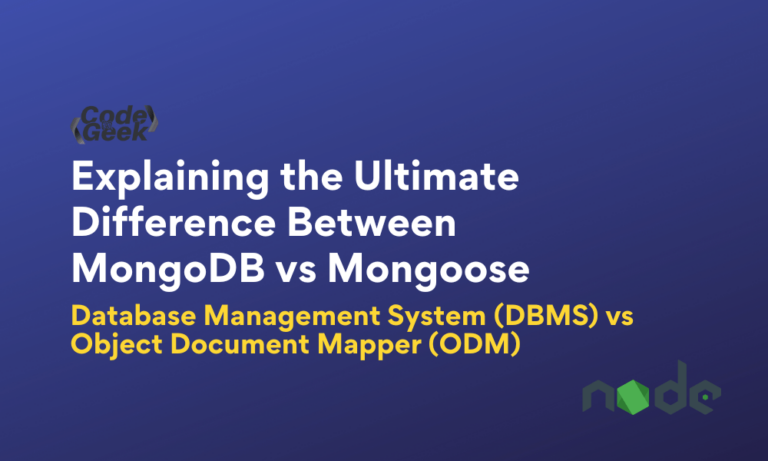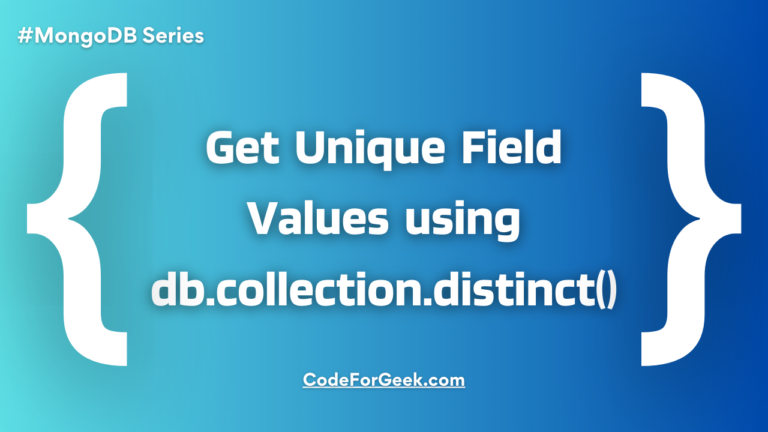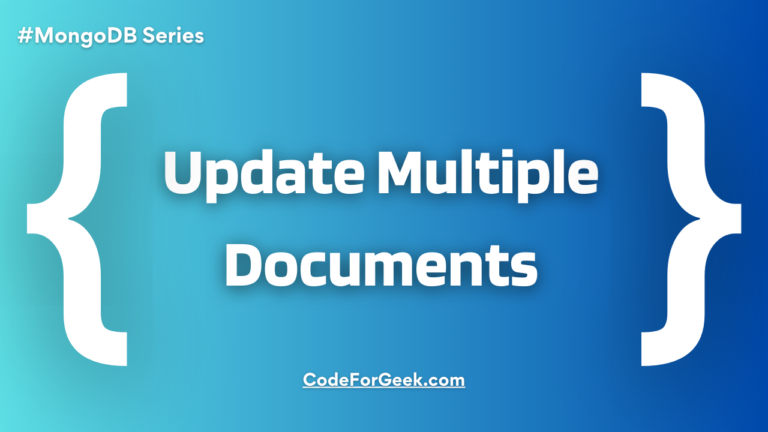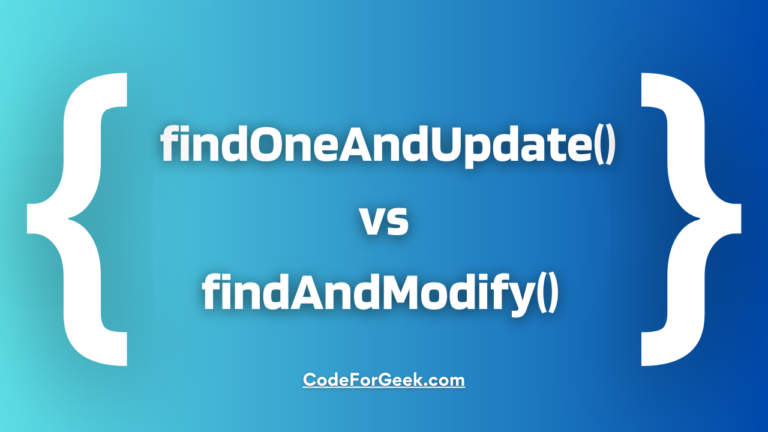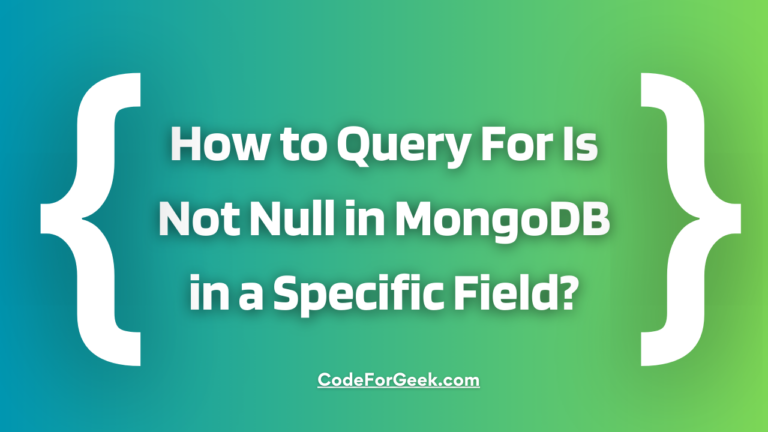NoSQL databases have become popular nowadays, providing the flexibility to design your schema to store data of different data types in a specific order. It is preferred over SQL when building large-scale applications and mainly with Node.js.
If you want to integrate the MongoDB database into your Node.js project, you can do it in two popular ways, using MongoDB native driver or using Mongoose.
Initially, MongoDB seems more powerful but then with time, it becomes complicated for beginners so people created Mongoose. Mongoose is an Object Data Modeling (ODM) library for MongoDB that provides a higher-level abstraction to connect faster and improve operations speed. But they are always have a confusion that what technology we apply while interacting with the MongoDB database using Node.js.
In this tutorial, we will see the difference between MongoDB and Mongoose and understand both when and where to use them.
MongoDB vs Mongoose – A Quick Overview
Before going into the detailed comparison, let’s have a quick overview of the main features of MongoDB and Mongoose while comparing their key aspects.
| MongoDB | Mongoose |
| Database management system | Object document mapper |
| Stores giant amounts of data | Manages relationships between data |
| Supports multiple languages | Works only with MongoDB |
| Stores collections in the database | Defines schema for collections |
MongoDB vs Mongoose – A Comprehensive Analysis
Let us now see a detailed comparison between MongoDB and Mongoose.
Introduction to MongoDB
MongoDB is a document-oriented database management system that stores data in the form of BSON documents. It is a NoSQL also known as a Not-only SQL type database allowing users to store gigantic amounts of data. Unlike SQL databases where data is stored in the form of tables, a NoSQL database stores data efficiently as documents inside collections.
The MongoDB database management service is developed and managed by MongoDB Inc. It was first launched in February 2009 and is currently managed under SSPL (Server-Side Public License).
MongoDB is recognized by developers worldwide not only because of the efficiency and smoothness it provides when handling data, but also because of its driver support for popular languages like Nodejs, PHP, Java, Go, .Net, C, C++, Python, Ruby Scala, C#, Perl, Swift, Motor, and Mongoid.
Top firms like Facebook, Google, Adobe, Nokia, and many others have chosen MongoDB as their DBMS.
Advantages of MongoDB
- Flexible schemas
- Holds huge amounts of data
- Easy to scale and change-friendly
- Schema less because it allows storing of different documents in one collection
- Powerful, dynamic, and deep query
Read More: Comprehensive Guide to Install and Set up MongoDB on Windows
Introduction to Mongoose
Mongoose is an ODM or Object Document Mapper. It is also referred to as an Object Modelling Tool. It is built on top of the MongoDB driver for MongoDB and Node.js. It helps developers to model their data, define the schema for documents inside a collection, and manage relationships between data.
Mongoose allows users to conveniently create and manage data in MongoDB. While it is possible to manage data, define schemas, etc. using MongoDB APIs, it is quite difficult to do so. Hence, Mongoose has made lives easier.
However, if our collection holds an unpredictable schema for the documents, using the MongoDB driver is then the simplest option to choose.
If you are a beginner and want to create your own JavaScript APIs that contain data to send as a response to your users, try using Mongoose as a database integration, because it’s easy to use and it’s super flexible to create Mongoose schema.
Advantages of Mongoose
- Chained functions make code flexible and readable
- Eliminates the need to use named collections
- Performs bulk tasks of incorporating default values for properties and data validations
- Easier to define the schema
- Features like type casting, data validation, query building and more
Read More: How to Check if Mongoose is Installed in Nodejs?
Now that we have seen quite a decent synopsis of the difference between MongoDB and Mongoose, let us understand what they do at their core. To do this, we will need to understand what a database management system is to understand MongoDB, and what an Object Document Mapper (ODM) is for Mongoose.
What is a Database Management System (DBMS)?
To understand what a DBMS or a database management system is, we must understand what a database is. A database is nothing but an organized collection of structured data or information that is generally stored in a computer.
A database usually interacts with a database management system (DBMS) to let the user control and manage the data stored in it. A DBMS is nothing but software or interface that allows complete control over the data such as creating, reading, editing, deleting, etc. It also facilitates access control systems and other services like backups, reporting, storage, security, and more.
What is an Object Document Mapper (ODM)?
An object document mapper (ODM) in simple terms, maps objects with a document-based database like MongoDB. An object document mapper allows a developer to define a schema for documents inside collections.
It allows users or developers to structure the documents well for better representation. An ODM also enables users to add new properties and fields easily.
Conclusion
There was a time when relational databases were popular for storing large sets of data because the stored data is relational with others, making it easy to filter and retrieve the required data easily. But with the development of technologies and the need for more flexible databases with the ability to categorize the database structure based on the requirement, the non-relational database comes into action. If you want to integrate it into your Node.js application, you can use MongoDB, but if you find it hard to use and want to make it easier to implement, you can use Mongoose.
Reference
https://stackoverflow.com/questions/28712248/difference-between-mongodb-and-mongoose

